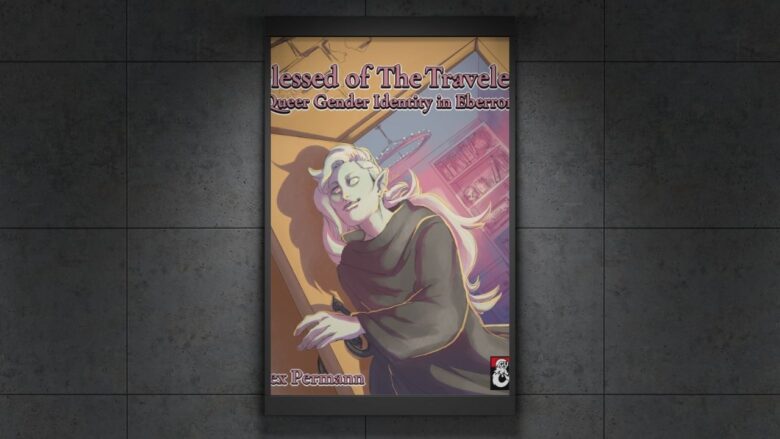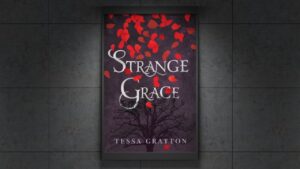The power of transformation has always been at the heart of fantasy—but what happens when shapeshifting becomes a metaphor for queerness and self-discovery?
Fantasy literature thrives on change. From characters who cross realms to those who gain magical powers, the genre is built around metamorphosis—of the self, the world, and everything in between. Shapeshifting, in particular, has long been a staple of fantasy: werewolves, selkies, dragons in human form. But in recent years, a growing number of authors have reimagined shapeshifters not just as magical beings, but as vessels through which queerness is explored and expressed.
In this guide, we’ll explore how queer shapeshifter characters reflect the fluidity of identity. These characters often defy fixed categories of gender and sexuality, offering readers dynamic, resonant portrayals of selfhood. Whether through literal transformations or symbolic shifts, queer shapeshifters embody the freedom to change, the refusal to be contained, and the joy of becoming one’s fullest self.
Shapeshifting as a Metaphor for Queer Identity
Shapeshifters have always occupied the margins of fantasy. Historically, they represent beings who move between forms, often existing in the in-between spaces of human and animal, spirit and flesh, known and unknowable. Mythical creatures like werewolves and selkies appear across global folklore, symbolizing transformation, wildness, and the tension between freedom and control. These figures have long embodied liminality—a term that describes thresholds, transitions, and identities that resist easy categorization.
In modern fantasy literature, shapeshifting has evolved into a powerful metaphor for queer identity. Contemporary authors are increasingly using transformative bodies to challenge binary thinking around gender and sexuality. Characters who shift between male and female forms, or who exist beyond the gender binary entirely, reflect real-world experiences of gender fluidity, transness, and queerness. These narratives do not simply use shapeshifting as spectacle, but as a way to interrogate what it means to inhabit a body that does not conform to societal expectations.
For example, a character who can assume multiple forms may mirror the journey of someone exploring their gender identity, navigating different expressions until they arrive at a more authentic sense of self. Similarly, a shapeshifter who is attracted to others regardless of their form can illustrate pansexual or fluid desire, challenging heteronormative frameworks.
Importantly, these stories often embrace intersectionality—acknowledging that queerness does not exist in isolation. Many queer shapeshifters also navigate racial, cultural, and spiritual identities that shape their transformations. A Black or Indigenous shapeshifter, for instance, might draw from ancestral myths while also resisting colonial narratives that police bodies and identities. The act of shifting, then, becomes both a reclamation of cultural heritage and a refusal to be defined by rigid social constructs.
Through these layered portrayals, fantasy becomes a genre not just of escape, but of affirmation. Shapeshifting offers a lens through which readers can see the beauty of change and the legitimacy of identities that live beyond the binary.
Recommended Books Featuring Queer Shapeshifters
Exploring queer shapeshifter narratives in fantasy offers readers a diverse and transformative reading experience. Below are five standout books where characters challenge and transcend fixed identities through bodily change, fluid desire, and nonconforming selfhood.
1. The Tiger’s Daughter by K. Arsenault Rivera This epic fantasy centers on the love story between two warrior women from rival nations. One of them, Shefali, is human, while her partner, Shizuka, is descended from divine shapeshifters known as the Hokkaran gods. Shapeshifting in this novel is not only a physical trait but also tied to divine power and ancestral legacy. The narrative celebrates queer romance and spiritual transformation, blending intimacy and mythology in a richly detailed world.
2. The Devourers by Indra Das Set in both modern and Mughal-era India, this novel tells the story of shapeshifting werewolves who feed on human flesh—and exist outside binary understandings of identity. The protagonist encounters an immortal shapeshifter who tells stories of queer love, gender fluidity, and ancient hunger. Das weaves myth, history, and queerness into a haunting exploration of desire and transformation, pushing the boundaries of both the body and the self.
3. An Unkindness of Ghosts by Rivers Solomon While not a traditional shapeshifter story, this science fiction novel features Aster, a nonbinary protagonist who lives aboard a space vessel structured by rigid racial and social hierarchies. The narrative explores bodily autonomy and the politics of identity, particularly through Aster’s resistance to categorization. Solomon uses the speculative setting to question how identity is constructed, manipulated, and reclaimed—core themes that resonate deeply with the idea of shapeshifting as metaphor.
4. The Black Tides of Heaven by Neon Yang In this silkpunk novella, children are born without assigned genders and later choose their own when they come of age. The protagonist, Mokoya, is part of a twin pair with latent prophetic abilities and a deep connection to elemental magic. Though not a literal shapeshifter, Mokoya’s journey embodies the spirit of fluid identity, transformation, and defiance of societal norms. Yang’s Tensorate series as a whole examines the intersections of gender, destiny, and rebellion.
5. Pet by Akwaeke Emezi Emezi’s novel introduces Jam, a Black trans girl living in a supposedly utopian society free from “monsters.” When a creature named Pet emerges from one of her mother’s paintings, Jam must confront the truth that evil still exists—even if society refuses to name it. While Pet is not a traditional shapeshifter, the book explores what it means to exist in a body that defies definition. Emezi reimagines how beings can embody truth, change, and resistance through otherworldly forms.
Each of these books offers a unique lens on transformation—physical, emotional, or societal—anchored in queer experience. Through shapeshifters and fluid bodies, they invite readers to question static identities and embrace the freedom to evolve.
What These Stories Teach Us
Queer shapeshifter narratives do more than entertain—they offer deep reflections on identity, self-acceptance, and freedom. By centering characters who change form, defy labels, and embrace complexity, these stories challenge readers to rethink the meaning of identity in both speculative and real-world contexts. Here are three key lessons these narratives offer:
1. Embracing Change: Transformation as a Path to Truth In many fantasy worlds, transformation is not just a survival mechanism—it is a form of self-discovery. Queer shapeshifter characters often undergo physical or magical changes that mirror internal growth. These transformations represent journeys toward personal truth, showing that identity is not fixed but fluid, shaped by experience and choice. Rather than viewing change as something to fear, these stories present it as a necessary and empowering process. For queer readers, this message reinforces the idea that shifting one’s identity—whether in terms of gender, sexuality, or expression—is not only valid but essential to becoming whole.
2. Resisting Binaries: Queer Shapeshifters Challenge Fixed Ideas Traditional fantasy often relies on binaries—male/female, human/monster, good/evil. Queer shapeshifter narratives push back against this structure. Characters who live between categories, who refuse to choose one “form” or identity, complicate the idea that identity must be singular or stable. By embodying both/and rather than either/or, these characters resist societal pressures to conform. In doing so, they highlight the limitations of rigid classifications and open up space for diverse ways of being. Whether through gender-fluid protagonists or creatures that straddle multiple species or roles, these stories dismantle the binary worldview that excludes so many real-world identities.
3. Embodied Liberation: The Body as a Site of Power, Resistance, and Self-Creation In queer shapeshifter narratives, the body is not merely a container—it is an active participant in identity. Characters reclaim their bodies through transformation, challenging the ways society seeks to define or control them. Whether by shifting shape to escape oppression or to embrace pleasure and authenticity, these bodies are powerful symbols of liberation. For marginalized readers, this offers a potent metaphor: the idea that identity can be reclaimed, redefined, and embodied on one’s own terms. These stories emphasize that freedom is not just ideological—it is lived, felt, and enacted through the body.
Together, these lessons reveal why queer shapeshifter stories matter. They validate experiences of fluid identity, reject limiting norms, and celebrate the transformative potential of selfhood. Through fantasy, they offer both a mirror and a map for navigating change—and finding freedom in the process.
How to Find More Queer Shapeshifter Narratives
With the increasing visibility of queer voices in speculative fiction, there are more ways than ever to discover stories that center shapeshifting and fluid identity. Whether you’re a long-time reader or just beginning to explore these narratives, the following tips and resources can help you find rich, affirming, and genre-defying works that align with your interests.
Tips for Finding Queer Shapeshifter Stories
- Seek out queer-led or inclusive fantasy publishers. Independent and progressive presses often prioritize underrepresented voices, including queer and trans authors. Publishers like Tachyon Publications, Tor.com Publishing, and Small Beer Press are known for supporting speculative fiction that breaks traditional molds. Their catalogs are excellent starting points for finding queer shapeshifter stories.
- Pay attention to thematic keywords in synopses. Even if a book doesn’t explicitly label itself as queer shapeshifter fiction, look for themes like genderfluidity, metamorphosis, body horror, nonbinary, or transformation. These terms often indicate a narrative that explores bodily and identity changes in ways relevant to queer experiences.
- Follow queer book reviewers and fantasy critics. Social media platforms, blogs, and YouTube channels run by queer reviewers are invaluable sources of curated recommendations. These reviewers often highlight books that traditional outlets may overlook and provide nuanced commentary on themes of identity, embodiment, and representation.
Resources for Discovery
- Book Twitter/X Threads – Search hashtags like #QueerSFF, #OwnVoices, or #TransSFF to find community-generated recommendations. Many authors and readers regularly share themed lists and reviews.
- Goodreads Lists – Try searching for list titles such as “Queer Fantasy with Shapeshifters”, “LGBTQIA+ Speculative Fiction”, or “Fantasy Books with Gender Fluid Characters”. User-created lists can be filtered by popularity and genre tags.
- Queer SFF Reddit Communities – Subreddits like r/Fantasy and r/printSF frequently host recommendation threads. You can also visit more niche spaces like r/lgbtbooks for focused discussion.
- Author Recommendations and Newsletters – Many queer authors share recommendations in interviews, on social media, or through their personal newsletters. Signing up for newsletters from authors like Rivers Solomon, Charlie Jane Anders, or Neon Yang can lead you to other queer voices and their favorite reads.
By using these tools, readers can continue discovering stories that challenge norms and celebrate transformation in all its forms. The world of queer shapeshifter fantasy is rich, growing, and deeply resonant—waiting to be explored one book at a time.
Conclusion
The shapeshifter archetype in fantasy offers a powerful and imaginative framework for exploring queer identities. By presenting characters who move between forms, resist fixed definitions, and embrace change, these stories reflect the lived experiences of many LGBTQIA+ individuals. Whether through literal transformation or symbolic journeys of self-discovery, queer shapeshifter narratives affirm that identity is not static—it is dynamic, personal, and evolving.
These tales challenge traditional binaries and celebrate bodies as sites of autonomy, resistance, and reinvention. They invite readers to envision a world where becoming one’s true self is not only possible but heroic. As more authors continue to reimagine fantasy through a queer lens, shapeshifters will remain vital figures in this evolving literary landscape—guiding us through stories of change, survival, and boundless possibility.




